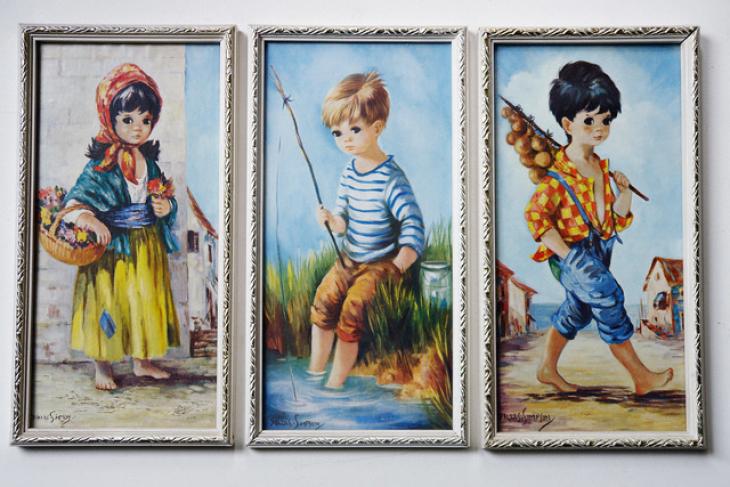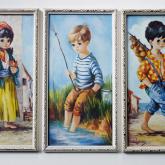
Buying Caribbean Art
Art in the Caribbean reflects thousands of years of history, from the indigenous peoples to immigration and waves of colonisation. It is a powerful art; diverse and proud, and led by artists who use their talent to tell the stories of Caribbean.
 Caribbean artists often cite the beautiful nature of their homeland as inspiration for their craft.Certainly, many of the watercolours, sketches, muralsand oil paintings which adorn the walls of galleries across the Caribbean region contain the shapes and shades of nature. From lush green rainforests, and the pastel-coloured coral gardens of underwater, to the Caribbean’s idyllic waves and beaches: Caribbean art captures this and more. It is eclectic and versatile, and a mix of high art and popular artwith no clear major trends and styles. It often depicts its African heritage, and celebrates the region’s cultural diversity. It is also growing in popularity as the surge in art fairs, in the region bears out.
Caribbean artists often cite the beautiful nature of their homeland as inspiration for their craft.Certainly, many of the watercolours, sketches, muralsand oil paintings which adorn the walls of galleries across the Caribbean region contain the shapes and shades of nature. From lush green rainforests, and the pastel-coloured coral gardens of underwater, to the Caribbean’s idyllic waves and beaches: Caribbean art captures this and more. It is eclectic and versatile, and a mix of high art and popular artwith no clear major trends and styles. It often depicts its African heritage, and celebrates the region’s cultural diversity. It is also growing in popularity as the surge in art fairs, in the region bears out.
For a wide array of artists and styles head to the Fine Art Fair in Barbados, where sales are brisk and access to Caribbean artists relatively easier at workshop events and talks. At the Jamaican Biennalethe focus is on home-spun Jamaican creative talent, though there are also some strong new emerging artists featured from all across the Caribbean. CafaFair is a showcase for newer artists that is increasingly attracting young talent.The diversity of galleries is also growing locally to provide a retail outlet for all sorts of art, not just that they please the tourist. Subjects are broader, and tackle the burning issues of the day –be it poverty or political corruption. At most larger exhibitions, galleries and art fairs you’ll find mention of the most famous artists from the Caribbean, namely Wilfredo Lam, Edouard Preston, Archibald Lochar, ThimoléonDéjoie, NumaDesroches and PetionSavain. MarithouLatortueDupoux, Pascal Moin, OdilleLatortueand EssudFungcap characterise the upcoming talent.
The earliest forms of art in the Caribbean were body painting and rock art by the indigenous Taino and Arawak tribes. Modern art became prominent in many Caribbean countries when they gained independence from the governing bodies occupying the islands. Due to the economic, historical and social differences across the Caribbean countries, a diverse array of art forms and styles exist. Jamaican art, in particular, has been sought after by overseas investors – and the works of Ebony G. Patterson are often celebrated in galleries across the world. Recently named on the Huffington Post Top 30 black artists under 40, Patterson is hailed as across a variety of art disciplines with her subjects deeply rooted in political concerns. Also important is Barrington Watson who is seen to stand at the forefront of Jamaican art since the post-independence era of the 1960’s.
[BOX OUT]
Top Tips for Investing in Caribbean Art
- Around 70-billion dollars-worth of art is bought each year. About half of the market is accounted for by sales through dealers, either directly from the artist’s studio (the “primary market”) or by reselling a work that has already been bought once (the “secondary market”)
- Seek advice on the authenticity of a Caribbean art piece, if you are unsure. Authenticity and value are inextricably linked.
- It could take hours to work through a gallery or fair, so it is important to do research ahead of attending exhibitions. It helps to nurture relationships with Caribbean art dealers beforehand so that they can see you are a serious collector.
- Once you have found a Caribbean artist you’d like to invest in, try to meet the artist. It helps to get a better understanding of where an artwork comes from, and who is responsible for creating it, and this can add value.
- Big names in art aren’t everything –it does not always guarantee a high resale value. Artists experiment a lot, so choose from their body of work.
- Be sure to store your art away from anything that could cause potential damage, such as flooding, fire, harsh sunlight and damp.
- Theft in the art world is a reality, so choose a registry so that your piece is logged just in case it become stolen work. You can also check a registry before purchasing. You must insure your art.
Remember, there is a non-financial value of art – an essential, emotion that can transfix and lifta person out of themselves. Perhaps this is its truest value?

